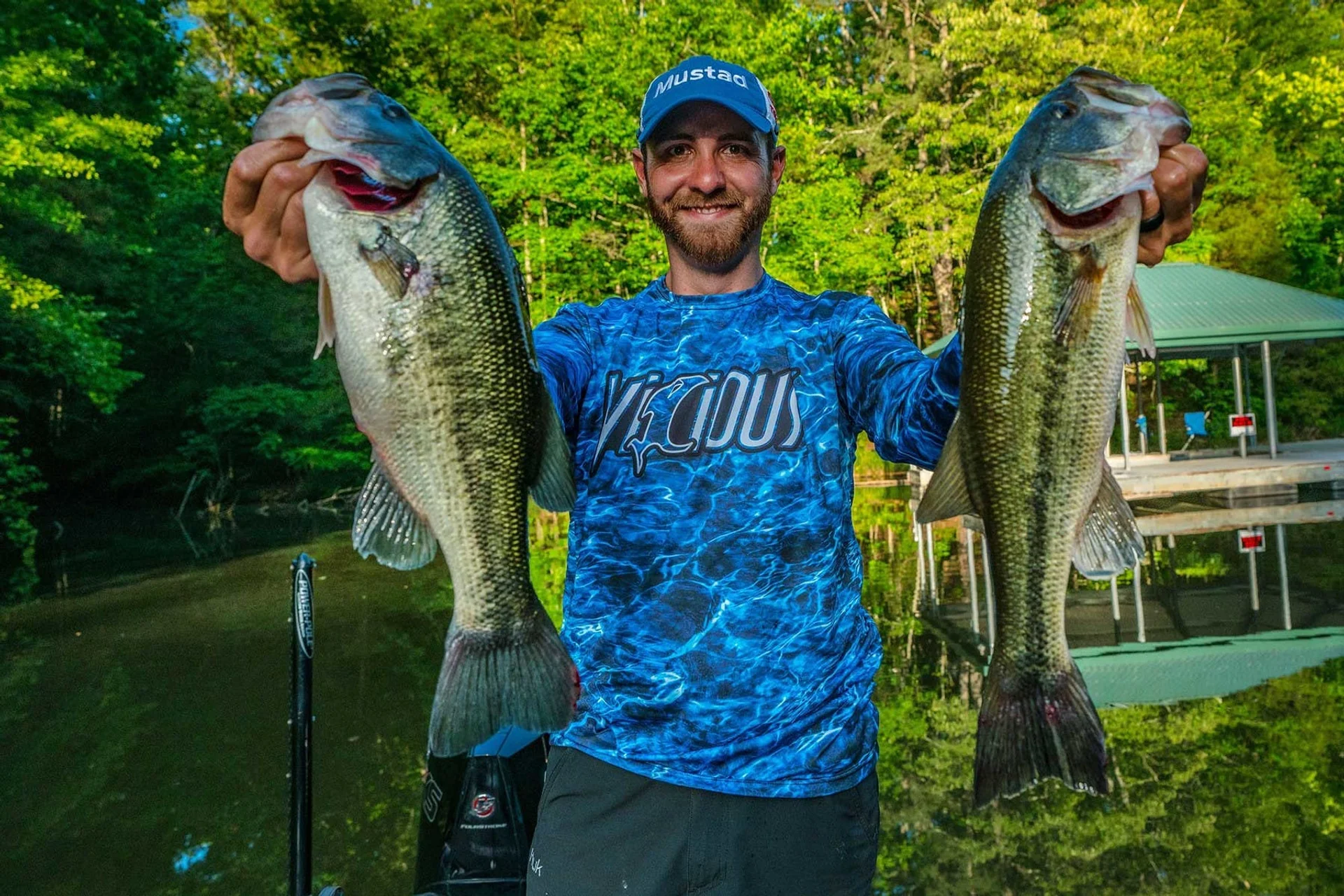Bream Bead Boogie

Bream beds have the big bass lurking. Take full advantage by working the surface attack.
Never is the largemouth bass’ opportunistic nature more boldly displayed than during the reproductive cycle of their arch enemy, the bluegill. Indeed, the same nest-raiding panfish that give bedding bass fits during their spring spawn wear a clear target on their flanks when it’s their time to bring forth the next generation.
And if you’re envisioning a pile of little fish schooling on bait like they do in the fall, think again; the bream bed pattern is a big-fish deal. A hand-sized — or bigger — panfish is a chunky meal that attracts quality bass, so gear up and expect fireworks.
Find the Maternity Ward
Great thing about fishing the bream bed pattern is that finding one bed typically means finding several. Prime spots include the leeward sides of secondary points, docks and other protecting structures, but covering water typically reveals multiple bream bed clusters, each with abundant opportunity.
You’ll typically find “wolf packs” of three to four big bass lurking near bream beds and striking when the panfish aren’t paying attention. The deal here is that the bass can be very nervous in the shallow bream spawning areas, so drop a waypoint on any beds you spot, give the fish time to settle down and return later.
As far as timing, bream spawns are usually later in the day. While shad like that darkness-to-daybreak period, bream are more active around midday. Active bream equals active bass, so plan accordingly.
Bait Selection
Topwater baits are always a blast, but working the surface attack over bream beds can yield explosive results. Walking baits like a Zara Spook or Strike King Sexy Dawg work well, as do poppers; but don’t forget the prop baits. When the bream beds are buzzing with activity, sputtering props drive bass crazy. (With all of these, Mustad KVD Triple Grip trebles are essential for securely snaring those big bream eaters.)
If the topwater bite fizzles, or if the fish just don’t want to play upstairs; that’s when a strong subsurface arsenal can keep you in the game. One of the most effective options is a soft stick bait or finesse worm wacky-rigged on a Mustad Titan-X Wacky/Neko hook. Long casts on light line present an irresistible shimmying fall that performs well on its own, or as a follow-up bait for any bass that rolls, boils or misses a topwater bait.
When the bream are tucked close to the bottom, a green pumpkin or black/blue finesse jig with a chunk or craw trailer is a good bet. Dip those trailer tips in orange or chartreuse to match bream coloration.
If you see the bream milling about the mid-depths, a bluegill shaped swimbait can work wonders. Also consider a bream colored lipless bait, which rises on the pause to simulate a fleeing action.
Here’s another innovative option: Rig a beaver style bait sideways (through the narrow edge) on a 4/0-5/0 Mustad Grip-Pin swimbait hook so the the bait moves through the water in an upright position to mimic a bream profile.
